What is Internal Link? A Guide to Building Internal Links for SEO Success in 2025
- Published on
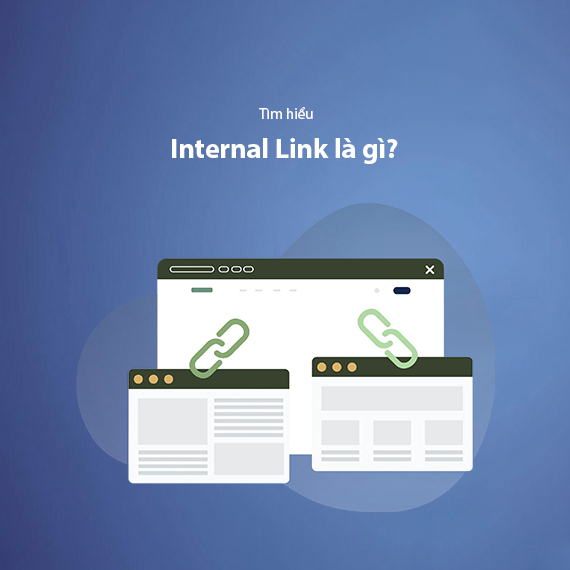
- What is Internal Link?
- What is External Link?
- Best Practices for Managing External Links
- Why Should You Use Internal Links?
- Types of Internal Links
- Navigational Internal Links
- Contextual Internal Links
- Image-Based Internal Links
- Guide to Optimizing a Website with Internal Links
- Step-by-Step Guide to Optimizing Your Website with Internal Links
- Principles of Internal Link Optimization
- Effective Internal Linking Models for SEO
- Pyramid Model
- Hub-and-Spoke Model
- Silo Model
- How to Check Existing Internal Links on Your Website
- 1. Use Tools to Gather Link Data
- Analyze the Number and Quality of Internal Links
- Detect and Fix Common Internal Linking Issues
- Update Internal Links Regularly
- Conclusion
What is Internal Link?
Internal Link refers to hyperlinks that connect one page to another within the same website. Unlike External Links, which direct users to a different website, Internal Links only work within the internal structure of a single site. These links not only make it easier for users to navigate and discover valuable information on your website but also play a crucial role in SEO optimization.
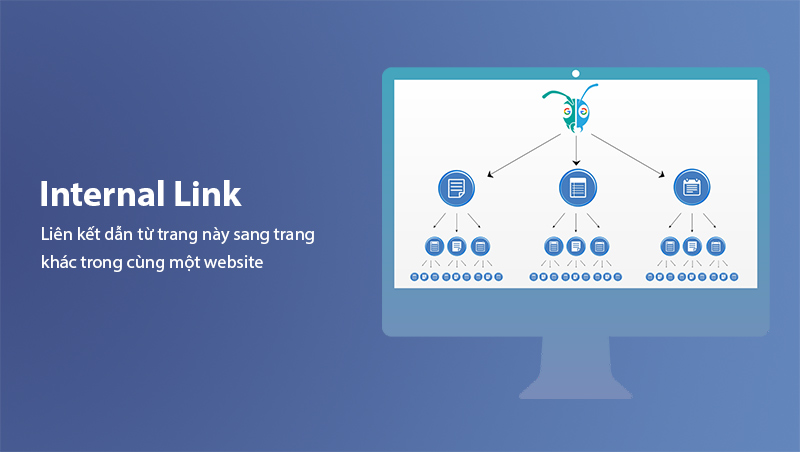
Search engines like Google rely on Internal Links to crawl, understand the structure of your website, and evaluate the importance of each page. By strategically using Internal Links, you not only guide users to other valuable content but also create a tightly linked system that boosts the ranking of key pages in search engine results.
Example: Page A links to Page B using a relevant keyword phrase. This not only helps Page B receive link authority from Page A but also encourages readers to explore related content.
In other words, Internal Links act as “bridges” connecting pages within your website, supporting each other to provide a seamless experience. A well-optimized internal linking system improves user experience, increases the time users spend on your site, and enhances the website's SEO performance.
What is External Link?
External Links are hyperlinks that connect your website to other websites outside your domain. External Links are divided into two main types: Inbound Links and Outbound Links.
-
Inbound Links (Backlinks): These are links from other websites pointing to your website. They play a vital role in building trust and authority for your site in the eyes of search engines.
- Example: When a reputable news website links to your content, that is considered an Inbound Link.
-
Outbound Links: These are links from your website pointing to other external websites.
- Example: If you write an article and link to an official resource on Google or another detailed article, that is an Outbound Link.
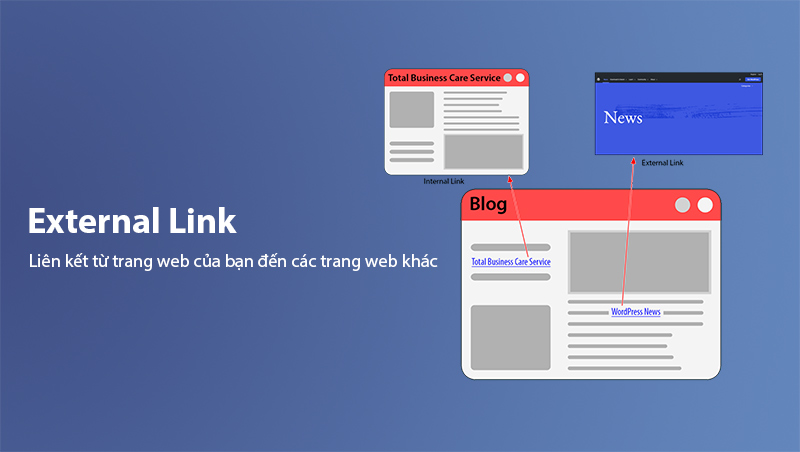
Although External Links include both types, website owners primarily focus on Outbound Links — links from their site pointing to others. This is because:
- Inbound Links (Backlinks) are beyond your direct control unless you have a network of satellite sites to leverage.
- Outbound Links are fully within your control. You decide where to link, how to use Anchor Text, and whether to add a nofollow attribute to manage link equity.
Best Practices for Managing External Links
To use External Links effectively and strategically:
- Only link to reputable and relevant websites.
- Avoid adding too many Outbound Links to prevent a negative user experience.
- Use the nofollow attribute if you don’t want to pass "link juice" (SEO value) to the linked page.
When used properly, External Links enhance content credibility, improve user experience, and support SEO efforts for your website.
Why Should You Use Internal Links?
Building a strong Internal Linking structure is essential for on-page SEO and user experience. Here are the key reasons why you should focus on creating Internal Links:
-
Helps Search Engines Understand Website Structure
Search engines like Google use bots to crawl and index websites. Internal Links help bots navigate the site, discover important pages, and understand the relationships between content pieces. A well-optimized internal linking structure ensures no page is overlooked during indexing. -
Distributes Link Authority to Important Pages
Each page on a website has a unique Page Authority. By strategically linking to important pages, you can distribute authority from strong pages to pages needing optimization, thereby improving their rankings in search results.Example: If a high-traffic blog post links to a newer, less visible post, it transfers link equity and helps the newer page rank higher.
-
Enhances User Experience (UX)
Internal Links act like a “navigation map,” guiding readers to related and useful information. This not only helps users explore your content more efficiently but also keeps them on your site longer, reducing the bounce rate. -
Boosts Conversion Rates
Internal Links can guide users to conversion-focused pages, such as product or service pages, increasing the chances of turning readers into customers. -
Optimizes Both Old and New Content
By linking new articles to older ones and vice versa, you ensure that all content remains visible and valuable. This strategy helps older posts maintain relevance while boosting the indexing speed of new content.
Types of Internal Links
Internal Links can be categorized based on their purpose and placement within a website. Understanding these types will help you build an effective internal linking strategy.
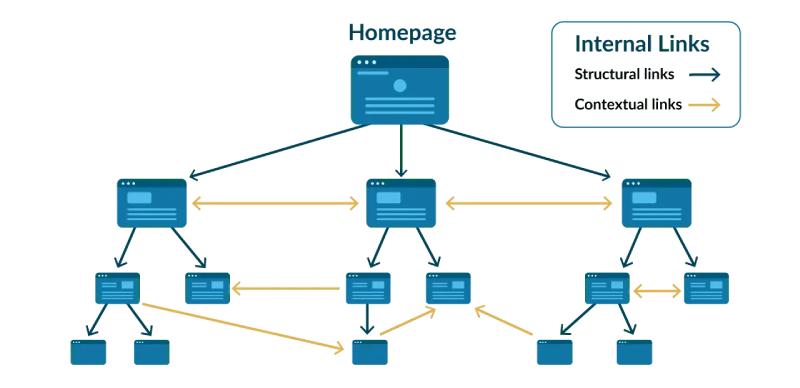
Navigational Internal Links
Navigational Internal Links are placed in fixed areas of the website, such as the main menu, footer, or sidebar. Their primary purpose is to help users easily access important and frequently visited pages like:
- Homepage
- Product or service categories
- Contact page
- Featured articles
Navigational Internal Links not only enhance user experience but also help search engines understand the structure and hierarchy of your website.
Contextual Internal Links
Contextual Internal Links are embedded directly within the content of a page or blog post. These links usually appear as Anchor Text and guide users to related pages or articles, providing additional value and context.
Benefits of Contextual Internal Links:
- Help users discover related topics and deepen their knowledge.
- Pass link authority to important subpages.
- Reduce bounce rate by encouraging users to explore further content.
Example: In this article, when we mention "How to Optimize Internal Links", a link could direct you to a detailed guide on that specific topic.
Image-Based Internal Links
Internal Links can also be placed on images. When a user clicks on an image, they are taken to the relevant linked page. This type of link is often used to:
- Attract user attention through banners or visual elements.
- Enhance the overall user experience with visual navigation.
Note: Always include alt text when linking images to ensure search engines understand the image’s purpose and improve SEO performance.
Combining Navigational Internal Links, Contextual Internal Links, and image-based Internal Links allows you to create a well-structured internal linking system that benefits both users and search engines.
Guide to Optimizing a Website with Internal Links
To optimize your website using Internal Links, you need a well-defined strategy and clear steps. Below is a detailed guide to building an effective internal linking system.
Step-by-Step Guide to Optimizing Your Website with Internal Links
Step 1: Identify the Landing Pages to Optimize
Start by identifying the key Landing Pages you want to improve rankings for in search engines. These pages can include:
- Core product/service pages.
- “Pillar Content” articles with high search traffic.
- Conversion-focused pages like registration forms or sales pages.
Focusing your internal links on these pages ensures they receive sufficient link authority and improve their rankings faster.
Step 2: List Relevant Topics and Keyword Clusters
Based on the Landing Page content, list out subtopics and relevant keyword clusters. This helps you identify supplementary articles and pages to create valuable internal links.
Example: If your Landing Page is about "On-Page SEO Guide", related topics could include:
- How to optimize meta descriptions.
- Effective keyword usage.
- Improving website load speed.
From here, you can easily find and insert Internal Links from related articles to the targeted Landing Page.
Step 3: Choose Relevant and Contextual Anchor Text
Anchor Text (the visible, clickable text in a hyperlink) plays a crucial role in guiding readers and search engines. When selecting Anchor Text, keep in mind:
- Use keywords or phrases related to the linked page’s content.
- Avoid keyword stuffing to prevent being flagged as spam.
- Ensure Anchor Text is natural and relevant within the article’s context.
Example: Instead of writing “click here”, use “detailed On-Page SEO guide” as Anchor Text to provide SEO value.
Step 4: Accurately Identify the Authority of Your Pages
Evaluate the strength and Page Authority of each page on your website to determine where to place links for the highest impact.
- Pages with high traffic and quality content typically carry higher authority.
- Use these pages to link to Landing Pages you want to optimize.
Tools like Google Analytics or Ahrefs can help you analyze and identify your website’s strongest pages.
Step 5: Use Internal Links to Boost Landing Page Rankings
Once you’ve identified the Landing Pages and their supporting content, the next step is to strategically create internal links pointing to them.
How to do this:
- Prioritize links from high-authority pages: Pages with stable traffic and credibility transfer more link value to the targeted Landing Pages.
- Insert links naturally in the content: Avoid overloading links; they should blend naturally into the text.
- Place links where they’re most visible: Links positioned early or in the middle of the content tend to have higher click-through rates (CTR).
Example: In an article about "What is On-Page SEO?", you can link to a Landing Page about "Comprehensive SEO Services" with the Anchor Text: “SEO services for sustainable ranking growth”.
Additionally, ensure that the pages linking to the Landing Page add value for readers, as Google prioritizes links that enhance user experience rather than those solely for SEO purposes.
Step 6: Optimize New Content with Internal Links
Whenever you publish new content, don’t forget to use Internal Links to connect it with existing pages or articles on your website. This provides two key benefits:
- Faster Indexing for New Content: Search engines can quickly discover and index new pages through internal links.
- Keep Older Content Relevant: Links from new content help older articles stay visible and drive additional traffic.
How to do it effectively:
- Add links from related older articles to your new content.
- In the new content, include links to older posts covering relevant topics.
Example: If you write a new post on “How to Choose Effective Anchor Text”, you can link to an older article about “Internal Link Optimization Guide” to supplement the reader’s knowledge.
Principles of Internal Link Optimization
To ensure your Internal Link system works effectively, follow these principles. They not only improve SEO performance but also enhance user experience.
Link to Important Pages
Identify and prioritize links to critical pages such as:
- Core product or service pages.
- High-value “Pillar Content” articles.
- Conversion-focused pages like registration or contact pages.
These pages need more internal links pointing to them to increase their authority and improve their search rankings.
Use Anchor Text Wisely
Anchor Text should be natural and relevant to the linked content. Key principles for Anchor Text include:
- Use target keywords or related phrases.
- Avoid over-optimization by varying Anchor Text.
- Make sure it provides context and value to readers.
Example: Instead of writing “learn more”, use “on-page SEO optimization techniques” for better clarity and SEO benefit.
Avoid Overloading Internal Links
While Internal Links are beneficial, adding too many links on a single page can:
- Dilute link authority.
- Disrupt the user experience.
- Lower content quality in the eyes of search engines.
A good rule of thumb is to include links only when they add value and relevance to the content.
Regularly Audit and Update Internal Links
The structure of your website evolves as you publish new content and update older pages. Therefore, it’s essential to regularly audit and optimize your internal linking:
- Fix broken links (404 errors).
- Update new links for recently published content.
- Refine Anchor Text to keep links natural and effective.
Tools like Google Search Console, Screaming Frog, or Ahrefs can help you monitor and improve your internal linking strategy.
Keep Links Natural and User-Friendly
Internal Links should feel natural and enhance the reading experience. Make sure links:
- Fit seamlessly into the article’s context.
- Lead to pages that provide additional value to the reader.
- Form a logical navigation path, making it easy for users to move between content.
By following these principles, you’ll create an SEO-friendly Internal Link system that not only boosts rankings but also improves user satisfaction and engagement.
Effective Internal Linking Models for SEO
To build an optimized Internal Linking system, you need to apply structured models that suit your website’s architecture. Here are three popular and effective Internal Linking models that drive SEO success:
Pyramid Model
The Pyramid Model organizes pages into a clear hierarchical structure:
- The Homepage sits at the top of the pyramid.
- Category pages sit below it, linking directly from the Homepage.
- Child pages or detailed posts sit at the bottom, linking up to their respective category pages.
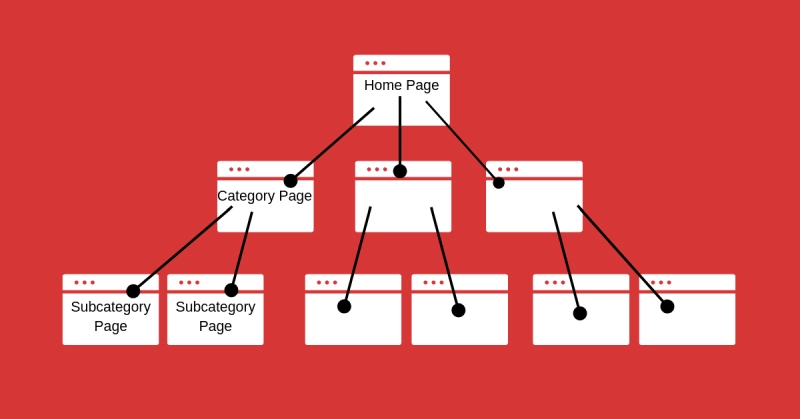
Benefits of the Pyramid Model:
- Makes it easier for search engines to crawl and understand the site structure.
- Distributes link authority evenly from the Homepage to lower-level pages.
- Improves rankings for important pages lower in the hierarchy.
Example:
Homepage ➔ SEO On-Page Category ➔ Article: "How to Optimize Title Tags for SEO".
Hub-and-Spoke Model
The Hub-and-Spoke Model focuses on a central hub page that links to related supporting content (spokes). The supporting pages, in turn, link back to the hub, creating a circular and interconnected structure.
Benefits of the Hub-and-Spoke Model:
- Strengthens content clusters around a specific topic.
- Builds link equity to the hub page, improving its authority.
- Encourages users to explore related content, improving engagement.
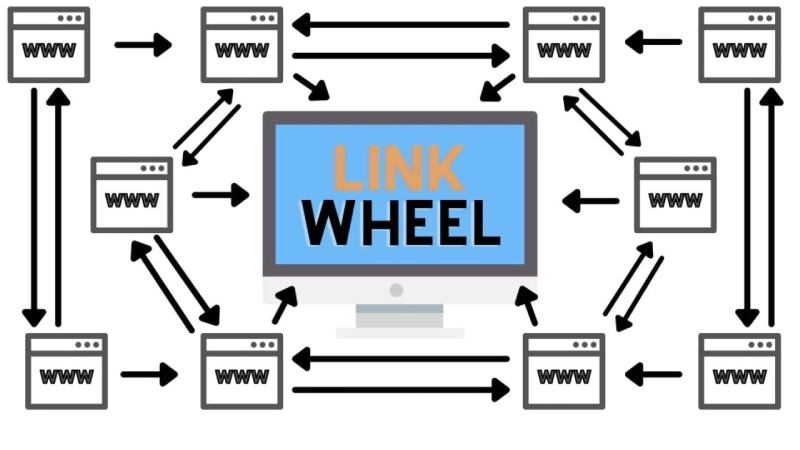
Example:
Hub Page: "Complete On-Page SEO Guide"
- Supporting Posts:
- "How to Write Meta Descriptions"
- "Optimizing URLs for SEO"
- "Best Practices for Anchor Text"
Each supporting post links back to the hub page, reinforcing the central topic.
Silo Model
The Silo Model organizes website content into topic-based silos where pages within the same silo link to one another, but rarely link outside their silo. Each silo has a pillar page as its core, surrounded by supporting content.
Benefits of the Silo Model:
- Enhances topic relevance and focus within silos.
- Helps search engines identify and rank content clusters by theme.
- Creates a clean, organized structure that improves user navigation.
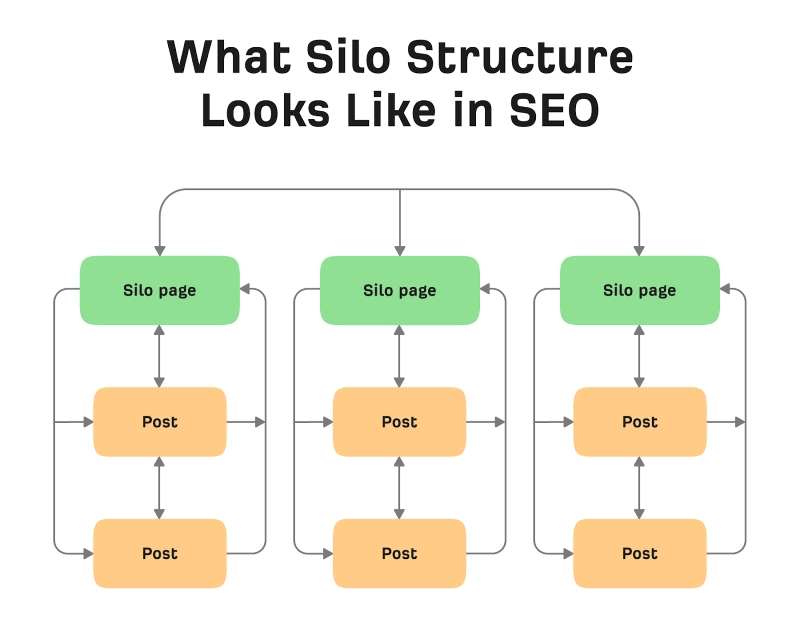
Example:
-
Main Topic: On-Page SEO
- Supporting Pages:
- "Optimizing Title Tags"
- "Improving Page Load Speed"
- "SEO Content Writing Tips"
- Supporting Pages:
-
Main Topic: Off-Page SEO
- Supporting Pages:
- "How to Build Backlinks"
- "Guest Posting for SEO"
- "Effective Link Building Strategies"
- Supporting Pages:
Pages within a silo link to each other but not to unrelated silos, creating a highly focused content structure.
How to Check Existing Internal Links on Your Website
To ensure your Internal Linking system works seamlessly, you need to regularly audit and monitor the links on your website. Here’s how you can do it effectively:
1. Use Tools to Gather Link Data
SEO tools can help you analyze and map out all Internal Links across your site. Popular tools include:
- Google Search Console: Provides an overview of your website’s internal links and their structure.
- Screaming Frog SEO Spider: A detailed tool to analyze Internal Links, Anchor Text, and identify broken links.
- Ahrefs Site Audit: Helps evaluate the number of links per page and detect common issues like orphan pages or broken links.
Analyze the Number and Quality of Internal Links
- Check the number of internal links per page: Ensure key pages receive more links while less important pages remain balanced.
- Evaluate Anchor Text: Ensure Anchor Text is varied, relevant, and SEO-friendly.
- Identify missing opportunities: Find pages that lack sufficient internal links and prioritize linking to them.
Detect and Fix Common Internal Linking Issues
- Broken Links (404 Errors): Replace or remove links pointing to non-existent pages.
- Orphan Pages: Identify pages with no internal links pointing to them, making them hard for search engines to crawl.
- Redirect Loops: Fix links that repeatedly redirect without reaching a proper destination.
Update Internal Links Regularly
Website content evolves, so regularly review and optimize your Internal Links:
- Add new links when publishing fresh content.
- Remove outdated or irrelevant links.
- Update Anchor Text to align with current SEO strategies.
By leveraging tools and fixing issues, you ensure your Internal Linking system supports both SEO goals and user navigation.
Conclusion
Optimizing Internal Links is a critical SEO strategy that boosts keyword rankings, enhances user experience, and builds a logical site structure. By strategically linking pages, you help search engines understand the content hierarchy and guide users to important pages.
To succeed, you should:
- Identify and prioritize important pages for internal linking.
- Use Anchor Text that is relevant, natural, and optimized.
- Follow best practices, avoid overloading links, and conduct regular audits.
Combining models like the Pyramid, Hub-and-Spoke, and Silo will create a robust linking system tailored to your website’s goals. A well-optimized Internal Linking structure is not only an SEO tool but also a pathway for delivering seamless navigation and valuable content to users.
Remember: “Internal Links are the invisible pathways that connect content, guide users, and lead to SEO success.”
Latest Posts

Lesson 26. How to Use break, continue, and return in Java | Learn Java Basics
A guide on how to use break, continue, and return statements in Java to control loops and program execution flow effectively.

Lesson 25. The do-while Loop in Java | Learn Basic Java
A detailed guide on the do-while loop in Java, including syntax, usage, examples, and comparison with the while loop.

Lesson 24. How to Convert Decimal to Binary in Java | Learn Basic Java
A guide on how to convert numbers from the decimal system to the binary system in Java using different methods, with illustrative examples.

Lesson 23. How to Use the While Loop in Java | Learn Java Basics
Learn how to use the while loop in Java with syntax, real-world examples, and practical applications in Java programming.
Related Posts
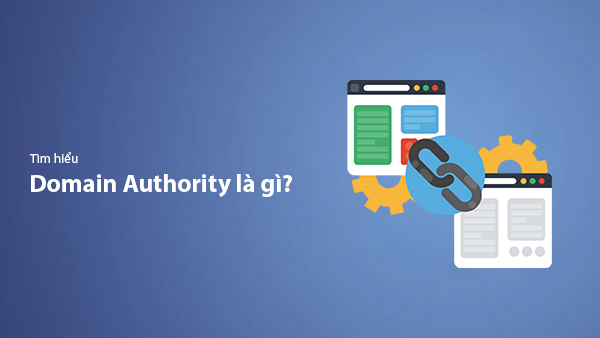
What is Domain Authority? 13-Step Guide to Improve DA Score for Your Website in 2025
Discover what Domain Authority is and its importance in SEO. A detailed guide on the 13-step process to effectively increase DA, from content research and technical optimization to building quality backlinks for a sustainable SEO strategy.
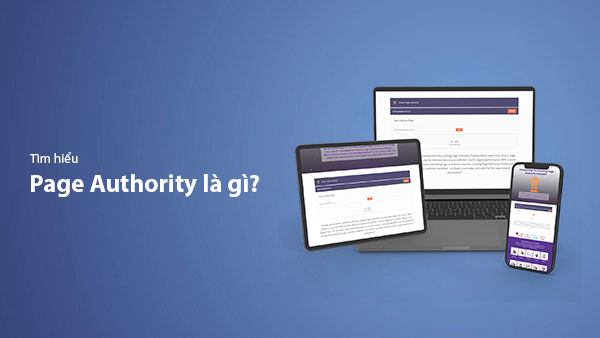
What is Page Authority? The Importance of Page Authority for SEO in 2025
Learn what Page Authority (PA) is and its role in SEO optimization to help improve your website's ranking on search engines in 2025.

What is Google Index? A Guide to 13 Ways to Speed Up Website Indexing in 2025
Discover what Google Index is and learn detailed guidelines on 13 effective ways to get your website indexed quickly and boost your SEO rankings on Google in 2025.
![What is Onpage SEO? 23+ Basic & Advanced Onpage Optimization Checklist [2025]](/blog-posts/seo-onpage/seo-onpage-thumb.jpg)
What is Onpage SEO? 23+ Basic & Advanced Onpage Optimization Checklist [2025]
Learn the concept of Onpage SEO and the 23+ basic to advanced Onpage optimization checklist to improve website quality and boost search rankings effectively.

